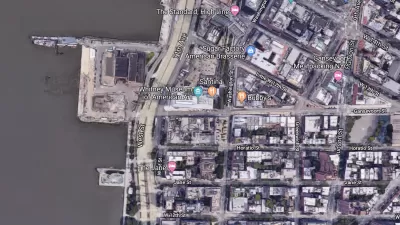Wealthy private donors take the lead in developing New York City projects, such as parks, writes Carol Berens, an architect, author, and real estate agent.
With New York City and other urban communities facing tight budgets these days, private donors are stepping up to spearhead improvement efforts, especially in parks.
One recent example of this is a $170 million proposed public park in the form of a floating island to be part of Hudson River Park designed by and paid for by wealthy, power couple Barry Diller and his wife, fashion designer Diane von Furstenberg.
In New York, the success of private money supporting public functions was demonstrated with the formation of the Central Park Conservancy, a group that raised private funds to turn the fortunes of that New York City landmark around and now is responsible for more than 75 percent of the park’s annual expenses and all of its improvements.
“Throughout America, cities have relinquished responsibility to build and maintain their public spaces, ceding that authority to independent managers and single-purpose organizations. As a result, the bike paths and clean benches in parks that serve the city at large, especially those in wealthier neighbors, are beacons of civic pride while the basketball courts and sliding ponds of many neighborhood parks remain sad indicators of urban neglect.”
While many have raised concerns about private entities taking over publicly-funded projects, city-generated funds for local use are discretionary, forcing a variety of projects to compete for those ever elusive dollars.
FULL STORY: West Side Story

Planetizen Federal Action Tracker
A weekly monitor of how Trump’s orders and actions are impacting planners and planning in America.

Maui's Vacation Rental Debate Turns Ugly
Verbal attacks, misinformation campaigns and fistfights plague a high-stakes debate to convert thousands of vacation rentals into long-term housing.

San Francisco Suspends Traffic Calming Amidst Record Deaths
Citing “a challenging fiscal landscape,” the city will cease the program on the heels of 42 traffic deaths, including 24 pedestrians.

Defunct Pittsburgh Power Plant to Become Residential Tower
A decommissioned steam heat plant will be redeveloped into almost 100 affordable housing units.

Trump Prompts Restructuring of Transportation Research Board in “Unprecedented Overreach”
The TRB has eliminated more than half of its committees including those focused on climate, equity, and cities.

Amtrak Rolls Out New Orleans to Alabama “Mardi Gras” Train
The new service will operate morning and evening departures between Mobile and New Orleans.
Urban Design for Planners 1: Software Tools
This six-course series explores essential urban design concepts using open source software and equips planners with the tools they need to participate fully in the urban design process.
Planning for Universal Design
Learn the tools for implementing Universal Design in planning regulations.
Heyer Gruel & Associates PA
JM Goldson LLC
Custer County Colorado
City of Camden Redevelopment Agency
City of Astoria
Transportation Research & Education Center (TREC) at Portland State University
Jefferson Parish Government
Camden Redevelopment Agency
City of Claremont




























